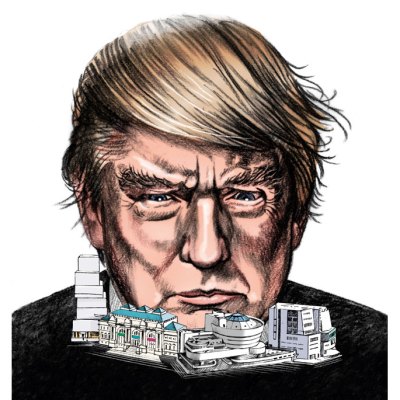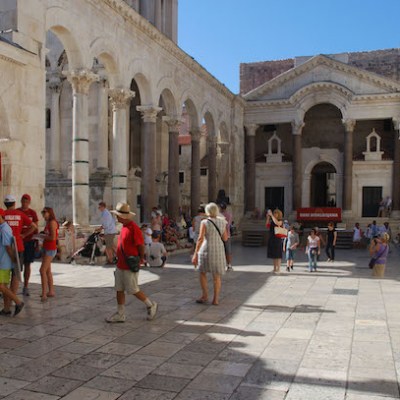As Lubaina Himid prepares for a retrospective across three UK venues, she tells Apollo about how black British art has evolved over the past three decades
Together, the exhibitions at Spike Island, Bristol, Modern Art Oxford, and Nottingham Contemporary constitute your first major retrospective and include work from the last 30 years. How has your practice evolved in this time?
I’m still as ambitious for the work, for what it might do and who it might speak to, as I was 30 years ago when I thought it could change the world. I understand now that it’s capable of opening up conversations but that much of what I tried to change has remained the same.
I’m probably more experimental than when I started, when I might have conformed to the norms of painting on canvas or on paper. In recent years, I’ve painted on found ceramics, on newspapers, on planks of wood, on farm carts. I experiment more with what a painting is or can be.
Cut-out from Naming the Money (2004), Lubaina Himid. Courtesy the artist and Hollybush Gardens
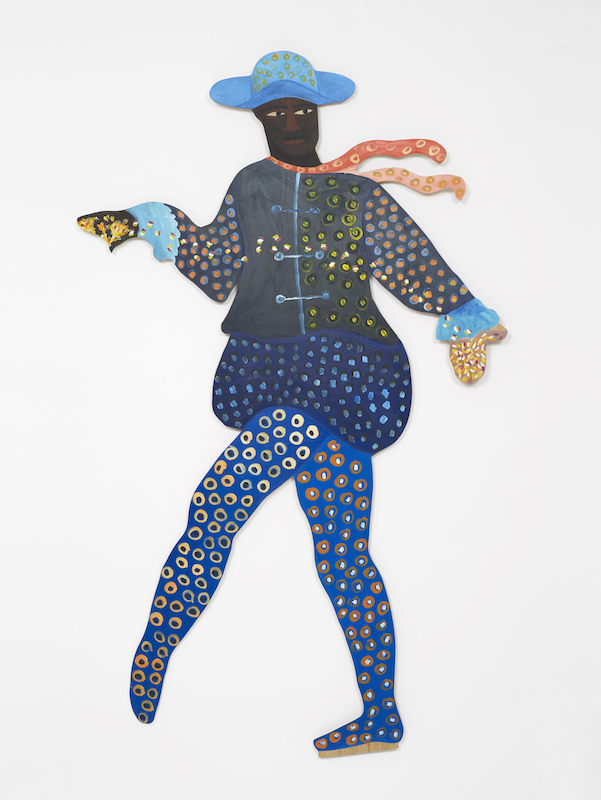
The exhibition at Spike Island features your installation Naming the Money [2004], a pivotal work in your career. Can you talk about what this work means and how it functions in this specific setting?
This is only the second time I’ve shown all of the work’s 100 life-size wooden cut-out figures of African slaves. At Spike Island, it will feel like you’re walking amongst the figures. Historically, black servants were signifiers of wealth; European portraits of wealthy families or individuals, particularly in the 18th and 19th centuries, often feature black servants at the margins of the frame. In my installation, you’re surrounded by all the slaves of Europe talking to each other. In a British setting, especially outside London and in an art gallery, it’s unusual to be in a space with 100 black people.
It’s great to experiment with the work’s display at Spike Island; it speaks to the space, which was once a tea factory, as well as to the city of Bristol itself – with its history of wealth accumulated by the slave trade. Hopefully visitors will engage with the piece on a personal level.
Cut-out from Naming the Money (2004), Lubaina Himid. Courtesy the artist and Hollybush Gardens

You’re known primarily as a painter, and in the past you’ve been described as a history painter. Do you think of yourself in such terms?
At the beginning of my career I was trying to place black people into historical events, to make the invisible more visible – in 1970s Britain you rarely saw black people on the television, or in newspapers. I wanted to make the point that black people have contributed to European cities – many were built on the money earned from the slave trade – and have influenced the cultural landscape. As northern European politics has evolved, so has my work: it’s become much more about African people not only being here, but being part of the place, making it a more vibrant and multilayered place to be. The history of why Africans are here is the history of why Europe was there.
You’re showing Freedom and Change [1984], which subverts a Picasso painting, at Modern Art Oxford. Your earlier work seems to deliberately challenge modern art and the depictions of black figures in art history…
Yes, it does. With Freedom and Change I was making the point that Picasso, like many modernists, felt completely at ease, as artists do, appropriating from multiple African cultures. I felt quite at ease appropriating back again. When Picasso was working in Paris in the early 20th century, African art was admired as ethnographic art, but little attention was paid to what people might be doing in Africa at the time.
Installation view of A Fashionable Marriage (1986) by Lubaina Himid at Tate Liverpool, 2014. Photo: Denise Swanson; courtesy the artist and Hollybush gardens
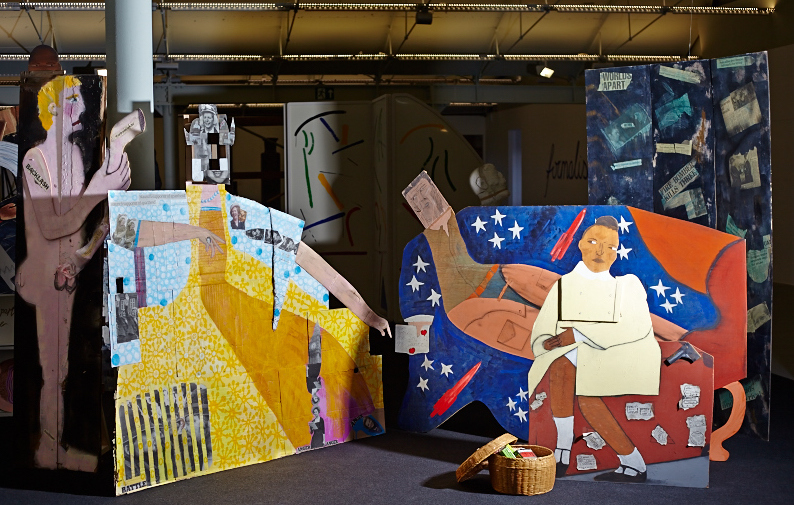
My work A Fashionable Marriage [1986] – which I’m showing in Nottingham – also subverts a Hogarth painting. If you look at Hogarth’s work – amazingly vulgar cartoons and extraordinary critiques of Britain in the 18th century – you can see the odd black person here and there, someone serving hot chocolate or playing with toys or begging. Both Picasso and Hogarth were appropriating and including the black body in their work; it gave me free rein to just take it back again.
You’ve described yourself in the past as a black artist and a feminist artist. What’s the relationship between the two identities?
I am a black feminist; they are not separate. But I would say I was a black artist more readily than a feminist artist because the political angle in my work has been stronger from that point of view. I have always championed the contribution of black women and that’s still very much part of what I do: In 2015, I curated a group show at Hollybush Gardens called ‘Carte de Visite’, featuring work by three black women artists who wouldn’t normally show there.
The exhibition at Nottingham Contemporary will place your work in the context of the Black Arts Movement which emerged in the 1980s. How did this movement affect your work?
The people that initiated my work at this time were in the Blk Art Group, which included Eddie Chambers, Keith Piper, Claudette Johnson, Marlene Smith, and Donald Rodney. Those people really stuck their heads above the parapet; I followed in their footsteps and began to champion women artists, along with Claudette and Marlene. How did the movement affect my work? I felt stronger for finding that I wasn’t alone, that other black artists were making work all over the UK – I wrote an MA thesis titled ‘Young Black Artists in Britain Today’ at the Royal College of Art.
Is it possible to talk about a black British art movement in comparable terms today?
I think it is strangely exactly the same. There are black artists who just want to make good work, and radical black artists who are driven by the injustices they see around them – and a whole lot in between. Hopefully this generation is stronger because they can see where we failed and succeeded, and they can try to do things differently. At the time we didn’t think we could be effective in any other way. And, of course, they have fantastic technical abilities now that we didn’t have.
Carrot Piece (1985), Lubaina Himid. Tate, London. Courtesy the artists and Hollybush Gardens

Race relations, British identity and migration have all been crucial political issues in 2016. These themes are also all prevalent in your work. How do you think contemporary politics will impact your work in the future?
It’s frustrating that many of us could see this coming; many issues brought up in the ’80s were not dealt with or resolved properly. Money was thrown at things and progress made in certain areas, but not in others. Resentment rises on both sides – if there are sides – or across classes or industries. And then it’s there ready to erupt again. As a result, many histories were not told properly. We’ve reached a time again where the history of Britain and the slave trade, or Britain and the black presence, isn’t being told in the positive way it could be told.
Cut-out from Naming the Money (2004), Lubaina Himid. Courtesy the artist and Hollybush Gardens
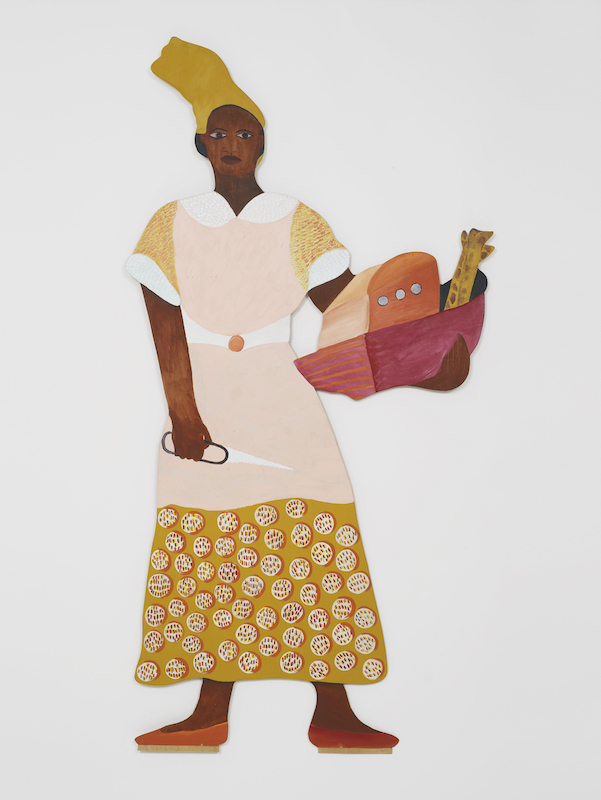
You’re based in Preston. How has living and working outside London affected your work?
I thought I’d be in Preston a couple of years – I grew up in London and went to art college there – but 26 years later I’m still here. I got a job in what was then the polytechnic as a lecturer, and am now the professor of contemporary art at the University of Central Lancashire. Preston has helped me work; I have a great studio in my house, I walk to work and there’s a lot of space and peace and time to make art. Living so close to work also means that my art and teaching aren’t two separate things, they’re entwined.
‘Lubaina Himid: Navigation Charts’ is at Spike Island, Bristol, from 20 January–26 March 2017; ‘Lubaina Himid: Invisible Strategies’ is at Modern Art Oxford from 21 January–30 April 2017; ‘The Place is Here’ is at Nottingham Contemporary from 4 February–30 April 2017.
For more information about Lubaina Himid, click here.
From the January issue of Apollo: preview and subscribe here.

